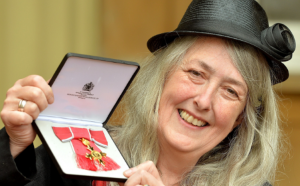Desmond discusses the effect of pitch heights and other vocal aspects in both genders.
Shakespeare’s Cressida1 refers us to an animal admired for its authoritative ‘voice’. Both male and female lions deploy ‘very loud and low-frequency vocalization’2 to communicate effectively over long distances. While lion cubs, by contrast, make quieter, higher-pitched sounds. These cub vocalisations carry much less authority, and less distance – partly to reduce the threat level posed by wily and voracious predators.

Image source: quora.com
The way humans sound when we speak can also be a powerful tool, for persuasion and leadership. But do we always use our voices to maximum effect? And with the recent rapid rise in remote (rather than face-to-face) contact, in the wake of Coronavirus concerns, are we aware of just how important a communication tool our voices really are?
The following quote, attributed to composer Richard Strauss, might explain why so many of us need help to speak with more lion-like authority; but also, simultaneously, with authenticity: ‘The human voice is the most beautiful instrument of all, but it is the most difficult to play’.3 Although it’s just possible Strauss was thinking about singing, as much as speaking.
There are many ways in which we can improve our vocal delivery, to give the most accurate and positive impression possible of our true selves. One method is deepening our Pitch Height (PH). This measures the average number of your vocal cords’ vibration cycles per second – their Fundamental Harmonic (F0) – expressed in Hertz. Which dictates how ‘high’ or ‘deep’ your voice sounds to a listener. It’s something we can all actively influence. More vibrations give a higher pitch; fewer vibrations a deeper one. It’s a vocal characteristic about which some people suspect latent gender bias, as we shall see.
Anatomically, in both genders, a deeper voice is produced by longer vocal chords. A large body of research shows that deeper voices convey more authority, gravitas and seniority. More ‘Lion/Lioness’, as it were. This perception is true for audiences of both genders, when hearing both male and female voices. Since deeper PH positively affects audience perceptions of a speaker’s competence and credibility, it can be beneficial to deepen your vocal pitch, especially if it’s higher than your gender average. This might explain why both Margaret Thatcher and David Beckham, to name just two famous examples, both had voice coaching which noticeably deepened their PH.
At GPB we are occasionally asked whether women’s voices are naturally disadvantaged in terms of perceived gravitas by being, on average, higher than those of men. The simple answer is that, despite a noticeable average PH difference, there’s little evidence this delivers an intrinsic advantage for male speakers. In both genders, deeper voices project more authority and persuasiveness to a similar degree.
A different view was taken by Dame Mary Beard, the high-profile Cambridge University Classics Professor, who spoke from a cultural perspective in March 2014 about aspects of voice and gender4. She noted derogatory labels sometimes assigned to women’s discourse, such as: “strident”, “stupid”, “whingeing” and “whining”. Describing these as representing ”attitudes, assumptions and prejudices hard-wired into … our culture, our language and our history”. That may well have been true then, but it is very much to be hoped this landscape has shifted positively, in the six years since her talk.
She also claimed, “there is no neurological reason for us to hear low-pitched voices as more authoritative than high-pitched ones”. Which may be correct – but does not alter the fact that, rightly or wrongly, the body of psychological and sociological research shows this to be precisely how we do assess each other. In the cases of male and female listeners, for both female and male speakers.

Regardless of comparative PH considerations, however, it’s worth noting that female voices on average exhibit a wider Pitch Range (PR) than those of men. This is the difference between the highest and deepest extents of vocal pitch, rather than their average. ‘Males often speak at 65 to 260 Hertz, while females speak in the 100 to 525 Hz range’5. These example figures show there’s both a significant overlap between average female and male PR – in the 100 to 260 Hz range – AND, typically, a far more extensive female range.
This broader female PR provides a potential vocal advantage which can help make women sound more pleasant than men. That pleasantness results from the greater amount of Pitch Modulation (PM) available to women – the degree to which PH moves up and down in a pattern, during speech. A well-modulated and natural pitch pattern can gain and retain greater audience attention, so long as it is not used to excess.
Overall, GPB’s advice is not to get ‘hung up’ on concerns of gender bias in regard to comparative PH, since evidence suggests no natural disadvantage exists. Although we should all focus on deepening our vocal pitch, if it is higher than our gender average. This will help project increased authority (like those Kings and Queens of the jungle) – and improve our persuasiveness.
But we should prioritise other, more critical vocal improvements: e.g. in our active use of PR and PM. Not least in these, our remote-working ‘Virus Times’. When phone contact levels (without all those helpful visual cues, nuances and subtleties) have suddenly increased dramatically. GPB research reveals that Range and Modulation represent rather more significant issues for many more of our clients than does Pitch Height.
By Desmond Harney
- Cressida, in ‘Troilus and Cressida’ by William Shakespeare [Act 3, Scene 2, Line 89]
- Sarah A. Klemuk, Tobias Riede, Edward J. Walsh, Ingo R. Titze. ‘Adapted to Roar: Functional Morphology of Tiger and Lion Vocal Folds’. PLoS ONE, 2011; 6 (11): e27029 DOI: 10.1371/journal.pone.0027029
- QuoteTab. 2020. Richard Strauss Quotations At Quotetab. [online] Available at: <https://www.quotetab.com/quotes/by-richard-strauss>.
- Mary Beard: ‘The Public Voice of Women’: London Review of Books Lecture, 20th March 2014 – https://www.lrb.co.uk/the-paper/v36/n06/mary-beard/the-public-voice-of-women
- University of Iowa – Voice Academy: https://uiowa.edu/voice-academy/male-female-voices
Download a PDF of the article here:‘They that have the voice of lions’… and of lionesses

